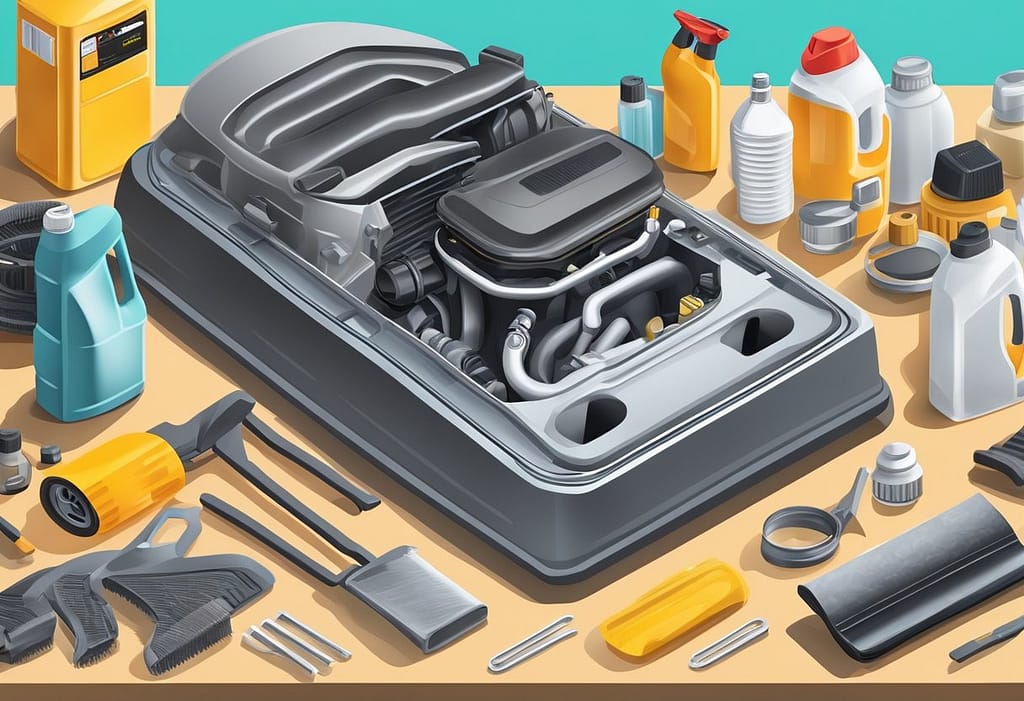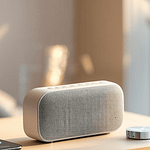
Basic Car Maintenance to Prevent Costly Repairs
Basic car maintenance is the unsung hero of the automotive world, quietly saving you from the villainous clutches of costly repairs. It’s the cape-wearing, wrench-wielding guardian that ensures your trusty metal steed stays in tip-top shape, ready to conquer the morning commute or a cross-country adventure. Now, you may not leap tall buildings in a single bound, but with a few simple upkeep tips, you can certainly leapfrog over those pesky repair bills.
Think of your car as a loyal pet; it doesn’t ask for much—just regular check-ups, a scrub behind the hubcaps, and the occasional treat in the form of fresh oil. Neglect these simple joys, and you’ll find your wallet feeling significantly lighter after an unplanned rendezvous with your mechanic. But fear not! This blog post is your trusty roadmap through the twists and turns of spark plugs, tire pressure, and the mysterious realm under the hood.
So, buckle up, dear reader, and prepare for a journey into the heart of automotive wellness. We’ll navigate the highways and byways of fluid checks and brake inspections with a sprinkle of humor and a dash of wit. By the end of this expedition, you’ll be armed with the knowledge to keep your chariot running smoothly, and the repair shop’s “We Miss You” cards will gather dust in your mailbox. Let’s roll up our sleeves (figuratively, of course—no grease stains on our keyboards, please) and dive into the world of basic car maintenance, where every driver becomes a savvy car whisperer.
Overview on Basic Car Maintance

Maintaining your car is essential to keep it running smoothly and avoid costly repairs. Basic car maintenance is not complicated and can be done by anyone with a little bit of knowledge and some basic tools. In this article, we will cover the basics of car maintenance and give you some tips on how to keep your vehicle in top shape.
The first step in basic car maintenance is to check the fluids regularly. This includes the engine oil, transmission fluid, brake fluid, power steering fluid, and coolant. Low or dirty fluids can cause serious damage to your car’s engine and other components. We will show you how to check and top up these fluids to keep your car running smoothly.
Understanding Basic Car Maintance
As car owners, it is important to have a basic understanding of our vehicles. This knowledge can help us identify potential issues and take preventative measures to avoid costly repairs. In this section, we will cover three important aspects of understanding your vehicle: the owner’s manual, maintenance schedule, and warning lights.
Owner’s Manual
The owner’s manual is a valuable resource that provides detailed information about your vehicle. It includes everything from basic operation instructions to more complex maintenance procedures. We recommend that you keep your owner’s manual in a safe place and refer to it whenever you have a question about your vehicle.
Maintenance Schedule
Following the manufacturer’s recommended maintenance schedule is crucial to keeping your vehicle in good condition. The maintenance schedule outlines the specific services that should be performed at certain intervals, such as oil changes, tire rotations, and brake inspections. By following this schedule, you can help prevent major repairs and keep your car running smoothly.
Warning Lights
Modern vehicles are equipped with a variety of warning lights that can alert you to potential issues. The most common warning light is the check engine light, which can indicate a problem with your engine, emissions system, or other components. If you see a warning light on your dashboard, it is important to address the issue promptly to avoid further damage.
In summary, understanding your vehicle is an essential part of basic car maintenance. By familiarizing yourself with the owner’s manual, following the maintenance schedule, and paying attention to warning lights, you can help keep your car running smoothly and avoid costly repairs.
Engine and Oil Care

Oil and Filter
Regular maintenance of your car’s engine oil and filter is crucial to keep your vehicle running smoothly. We recommend getting an oil change every 5,000 to 7,500 miles or as per your car manufacturer’s recommendation. The oil change process involves draining the old oil and replacing it with fresh oil, along with a new oil filter.
It is essential to check the oil and coolant levels regularly to ensure that they are at the recommended levels. Low levels of oil or coolant can cause significant damage to your car’s engine.
Engine Air Filter
The engine air filter prevents dirt, dust, and debris from entering the engine, which can cause significant damage to the engine’s internal components. We recommend checking the engine air filter every six months or 7,500 miles, whichever comes first. If the filter is dirty, it needs to be replaced.
Spark Plugs
Spark plugs are essential components of your car’s ignition system. They ignite the fuel in the engine, which provides the power to move your car. We recommend checking the spark plugs every 30,000 miles or as per your car manufacturer’s recommendation. If the spark plugs are worn or damaged, they need to be replaced to ensure proper engine performance.
In summary, regular maintenance of your car’s engine and oil is crucial for the longevity and performance of your vehicle. It is essential to follow the recommended maintenance schedule and check the oil and coolant levels regularly. Checking and replacing the engine air filter and spark plugs at recommended intervals will also help keep your car running smoothly.
Battery and Electrical System

Car Battery
The car battery is an essential component of the electrical system in a vehicle. It provides the electrical energy required to start the engine and power the lights and other electrical devices. To ensure that the battery is functioning correctly, it is essential to perform regular checks.
We recommend checking the battery’s condition and voltage every six months. To do this, use a voltmeter to measure the voltage across the battery terminals. A fully charged battery should have a voltage of around 12.6 volts. If the voltage is lower, the battery may need charging or replacing.
Another critical aspect of battery maintenance is checking for corrosion on the battery terminals. Corrosion can prevent the battery from delivering the required voltage to the electrical system. To prevent this, clean the terminals regularly using a wire brush and a solution of baking soda and water.
Lights
The lights in a vehicle are essential for visibility and safety. Regular checks should be performed to ensure that all lights are functioning correctly. This includes the headlights, brake lights, turn signals, and interior lights.
To check the lights, turn on the headlights and walk around the vehicle to ensure that all lights are working correctly. If a light is not working, it may be due to a blown fuse or a faulty bulb. In this case, refer to the vehicle’s owner’s manual for instructions on how to replace the fuse or bulb.
Fuses
Fuses are designed to protect the electrical system from damage due to electrical overload. If a fuse blows, it will need to be replaced to restore the electrical system’s functionality. To replace a fuse, refer to the vehicle’s owner’s manual for instructions on the location of the fuse box and how to replace the fuse.
In conclusion, regular maintenance of the battery and electrical system is essential to ensure that the vehicle is functioning correctly. By performing regular checks and addressing any issues promptly, we can ensure that our vehicle’s electrical system is functioning correctly and avoid any potential problems down the road.
Tire Maintenance

Proper tire maintenance is crucial for safe and efficient driving. In this section, we will cover three important aspects of tire maintenance: tire pressure, tire tread, and alignment.
Tire Pressure
Maintaining the correct tire pressure is essential for optimal vehicle performance and safety. Underinflated tires can lead to poor fuel economy, premature tire wear, and decreased handling and braking capabilities. Overinflated tires, on the other hand, can cause a harsh ride, decreased traction, and uneven tire wear.
To ensure proper tire pressure, check your tires at least once a month using a tire pressure gauge. The recommended tire pressure can be found in your vehicle owner’s manual or on a sticker located on the driver’s side door jamb. Make sure to inflate your tires to the recommended pressure, and don’t forget to check the spare tire as well.
Tire Tread
Tire tread is the pattern on the surface of the tire that provides grip and traction on the road. Worn-out tire tread can lead to decreased traction, longer stopping distances, and an increased risk of hydroplaning in wet conditions.
To check your tire tread, use a penny or a tread depth gauge. Insert the penny into the tread with Lincoln’s head facing down. If you can see the top of Lincoln’s head, it’s time to replace your tires. The recommended minimum tread depth is 2/32 of an inch.
Alignment
Proper tire alignment ensures that your tires are pointing in the right direction and that they are parallel to each other. Misaligned tires can cause uneven tire wear, decreased fuel economy, and poor handling.
To check your tire alignment, look for signs of uneven tire wear such as bald spots or excessive wear on one side of the tire. If you notice any of these signs, it’s time to have your alignment checked by a professional.
In summary, maintaining proper tire pressure, checking tire tread regularly, and ensuring proper alignment are all important aspects of basic car maintenance. By following these simple guidelines, you can help ensure a safe and smooth driving experience.
Brake System

Maintaining a car’s brake system is essential for ensuring safe driving. Here are the key components of the brake system that we need to keep in mind:
Brake Pads
Brake pads are an essential part of the braking system that needs to be checked regularly. These pads are designed to wear out over time, and if they become too thin, they can cause significant damage to the brake rotor. We need to replace the brake pads when they have worn down to a thickness of 3mm or less.
Brake Fluid
Brake fluid is another crucial component of the braking system. It is responsible for transmitting force from the brake pedal to the brake caliper. The fluid needs to be changed every two years or as recommended by the car manufacturer. We must check the brake fluid level regularly and top it up if it’s low.
Rotors
The brake rotor is the disc that the brake pads press against to stop the car. Over time, the rotor can become worn or warped, leading to brake vibration or reduced braking power. We need to replace the brake rotors if they are too thin or have developed any cracks.
In conclusion, maintaining the brake system is a critical part of basic car maintenance. Regular inspection and replacement of brake pads, brake fluid, and rotors can help ensure the safe operation of our vehicle.
Fluids and Filters

When it comes to basic car maintenance, keeping an eye on your fluids and filters is essential for the longevity of your vehicle. In this section, we will go over the importance of checking and changing your fluids and filters regularly.
Coolant
Coolant is an essential fluid in your car that helps regulate the temperature of your engine. It’s important to check your coolant levels regularly and add more if necessary. Over time, coolant can become contaminated and lose its effectiveness, so it’s recommended to flush and replace your coolant every 2-3 years.
Transmission Fluid
Transmission fluid is responsible for lubricating the gears in your car’s transmission. Low levels of transmission fluid can cause damage to your transmission and lead to costly repairs. It’s recommended to check your transmission fluid levels regularly and change the fluid every 30,000-60,000 miles, depending on your car’s manufacturer recommendations.
Power Steering Fluid
Power steering fluid helps make steering your car easier and smoother. Low levels of power steering fluid can cause damage to your power steering system and make it difficult to steer your car. It’s recommended to check your power steering fluid levels regularly and add more if necessary. It’s also recommended to flush and replace your power steering fluid every 50,000-100,000 miles.
When checking your fluids, it’s also important to check your filters. A dirty air filter can cause decreased fuel efficiency and performance, while a dirty oil filter can cause damage to your engine. It’s recommended to change your air filter every 15,000-30,000 miles and your oil filter every time you change your oil.
By regularly checking and changing your fluids and filters, you can help ensure the longevity and performance of your car.
Belts, Hoses, and Wipers

Serpentine Belt
The serpentine belt is a crucial component of your car’s engine. It powers multiple systems such as the alternator, power steering pump, and air conditioning compressor. Over time, the belt can become worn or damaged, leading to potential engine failure. We recommend checking the serpentine belt regularly and replacing it every 60,000 to 100,000 miles, depending on the manufacturer’s recommendations.
Radiator Hoses
The radiator hoses are responsible for carrying coolant to and from the engine and radiator. Over time, they can become brittle and cracked, leading to leaks and engine overheating. We recommend checking the hoses regularly for signs of wear and replacing them every 4 to 5 years. When replacing the hoses, be sure to use high-quality, name brand hoses and follow the manufacturer’s installation instructions.
Windshield Wipers
Windshield wipers are essential for maintaining visibility while driving in inclement weather. We recommend replacing your wiper blades every 6 to 12 months, depending on usage and weather conditions. When choosing new wiper blades, consider investing in higher-quality blades with UV protection and a firm grip. Economy blades may save you money in the short term, but they may not last as long or provide as clear of a view. When replacing the blades, be sure to follow the manufacturer’s installation instructions.
Overall, regular maintenance of your belts, hoses, and wipers is crucial for ensuring the longevity and safety of your vehicle. By following these basic car maintenance tips, you can avoid costly repairs and keep your car running smoothly for years to come.
Suspension and Steering

At its core, a car’s suspension and steering system are responsible for keeping the vehicle stable and allowing it to move smoothly. Regular maintenance of these systems is crucial to ensure a safe and comfortable driving experience. In this section, we will discuss the two main components of the suspension and steering system: shocks and struts, and the steering system.
Shocks and Struts
Shocks and struts are vital components of a car’s suspension system. They work together to absorb vibrations and bumps in the road, providing a smooth ride for the driver and passengers. Over time, shocks and struts can wear out, leading to a bumpy and uncomfortable ride. It’s important to have them inspected regularly and replaced if necessary.
One way to check if your shocks and struts need to be replaced is to do a bounce test. Push down on the front or rear of the car and release. If the car bounces more than once, it’s a sign that the shocks and struts are worn out and need to be replaced.
Steering System
The steering system is responsible for controlling the direction of the car. It’s made up of several components, including the steering wheel, steering column, steering gear, and tie rods. Like any other system in your car, the steering system requires regular maintenance to keep it functioning properly.
One way to check if your steering system needs attention is to listen for any strange noises while turning the wheel. If you hear a clunking or grinding noise, it could be a sign of a problem with the steering system. It’s important to have it inspected by a professional mechanic.
In conclusion, the suspension and steering system are essential components of a car’s overall performance and safety. Regular maintenance, including inspections and replacements of worn-out parts, is necessary to ensure a smooth and safe driving experience.
Frequently Asked Questions
What items are typically included in a full car service checklist?
A full car service checklist usually includes a thorough inspection of the vehicle’s engine, brakes, suspension, steering, tires, and fluids. During a full car service, we check for any signs of wear and tear, leaks, or damage that may require attention. We also replace any worn-out parts and top up fluids as needed. A full car service is a comprehensive check-up that ensures your vehicle is in good working condition.
How often should routine car maintenance be scheduled?
Routine car maintenance should be scheduled at least once a year or every 10,000 miles, whichever comes first. Regular maintenance helps prevent breakdowns, extends the life of your vehicle, and ensures that your car is safe to drive. If you drive your car frequently or in harsh conditions, such as extreme temperatures or dusty environments, you may need to schedule maintenance more often.
What are the common services performed during a standard car maintenance visit?
During a standard car maintenance visit, we perform a range of services, including oil changes, tire rotations, brake inspections, and fluid top-ups. We also check your vehicle’s battery, belts, hoses, and filters to ensure they are in good working condition. If we notice any issues that require attention, we will provide you with a detailed report and recommend the necessary repairs.
What are the estimated costs associated with routine car maintenance?
The cost of routine car maintenance varies depending on the type of service required and the make and model of your vehicle. Typically, a standard car maintenance visit costs between $100 and $300, depending on the services performed. However, if we identify any issues that require repairs or replacement parts, the cost may be higher. We always provide our customers with a detailed estimate before starting any work to ensure there are no surprises.
Final Thoughts on Basic Car Maintance
And just like that, we’ve cruised through the scenic route of basic car maintenance, avoiding the potholes of breakdowns and detours to the mechanic’s garage. You’re now equipped with the essentials to keep your vehicular companion purring like a kitten that’s just discovered the joy of a sunbeam. Remember, a stitch in time saves nine, and a timely oil change saves a wallet in decline.
Before we part ways and you step out into the great garage of life, take a moment to pat yourself on the back. You’ve embraced the wisdom of tire rotations and the secret handshake of the dipstick. You’re not just a car owner; you’re a car connoisseur, a maestro of maintenance, a virtuoso of vehicular health.
So, as the sun sets on our little tutorial, don’t let those newfound skills gather dust like an old air filter. Put them to use, share them with friends, and bask in the glory of a well-maintained machine. And when someone asks you how you keep your ride running so smoothly, just wink and say, “A little birdie told me—all it takes is some basic car maintenance.”
Drive safely, maintain regularly, and may your journeys be as smooth as your engine after a tune-up. Until next time, keep your wheels spinning and your spirits high!




































